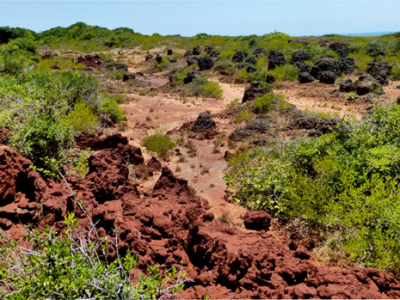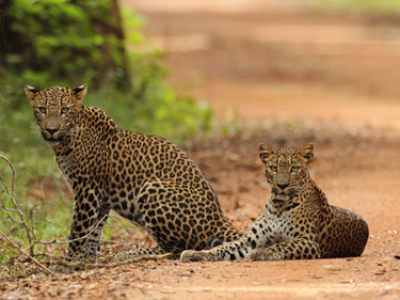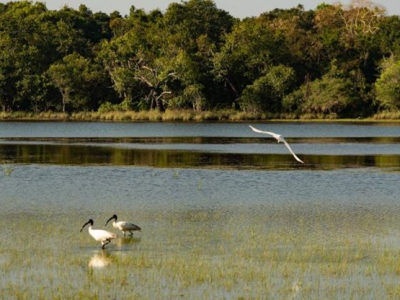All You Need to Know About Wilpattu National Park
Are you interested in an amazing wildlife tour in Wilpattu National Park? Here’s some information to help you plan it like a pro.
Wilpattu is one of the best places to see wildlife in Sri Lanka since it is both the country’s oldest and biggest national park. It’s around 180 kilometers north of Colombo, on the northwest coast of Sri Lanka, adjacent to Anuradhapura. It’s home to several amazing wildlife species in their natural environments. The Wilpattu National Park in Sri Lanka is overseen by the country’s Department of Wildlife Conservation (DWC). The nature reserve has a total land area of 131,800 hectares.
In the great isolation of Wilpattu National Park, you may see some of Sri Lanka’s most elusive animals. And this is Sri Lanka’s biggest and oldest wildlife reserve. It spans a massive expanse of terrain, providing shelter for a plethora of animals. The park is also a haven for several endangered and unique species. The star animals that call the park home include Sri Lankan elephants, leopards, and sloth bears.
A brief history of Wilpattu National Park
Although Wilpattu was first declared a wildlife refuge in 1905, this 13,500-hectare park’s advancement to national park status wasn’t accomplished until February 1938. However, the beginning of its storyline occurred a long time ago. The Indian ruler Vijaya is said to have landed on the reserve’s copper seashore in the fifth century BC, notably at the rocky point Kudiramalai. He married Sri Lanka’s Princess Kuveni, and the couple had children who would become the first of the Sinhalese people.
Thambapanni, also known as “the color of copper,” is an alternate name for the area because of the reddish sand that stained the feet and hands of Prince Vijaya and his group of roughly 700 followers upon their arrival. Wilpattu National Park is home to 68 archaeological monuments, one of which is the remnants of Kuveni’s palace.
Characteristics of the landscape of Wilpattu
With an area of 130,000 hectares, Wilpattu National Park is the biggest national park in Sri Lanka. The name of this stunning preserve comes from the Tamil words for “Land of the Lakes,” which are pronounced “willu” and “pattu,” respectively. Up to sixty “villus,” which are natural, shallow ponds for collecting rainwater and which rise and fall with the changing of the seasons, may be found scattered throughout the land. These magnificent waterholes and the surrounding lush grassy banks are wildlife magnets, making them excellent locations to see wildlife all year long. There are three distinct kinds of vegetation in Wilpattu National Park:
- The littoral vegetation, which consists of salt grass and low scrub directly near the shore.
- A 5-10 km coastal strip of monsoon scrub of extremely low height.
- The forested forest, which includes tall emergents like Milla, Weera, Ebony, Palu, Satin, and We Warna.
About two-thirds of the park is covered by trees and shrubs, while the remainder is more open.

Wilpattu’s flora and fauna
Numerous animal species may be found inside Wilpattu National Park as a result of the park’s diverse natural ecosystems. The ecosystems comprise scrublands, open grasslands, coastal strips, natural lakes, rocky outcrops, and deep forests. In all, there are 31 mammal species here. The leopards and sloth bears of Wilpattu National Park are among the most popular attractions there. Other animals found in the region include Asian elephants, sambhurs, barking deer, etc.
The Great Eggfly, Blue Mormon, and Common Butterfly are just a few of the numerous species that have been documented. From November through March, the park is home to many migratory bird species, and among the area’s reptiles, the most alarming are the large, dangerous crocodiles.

The climate in Wilpattu National Park and the best time to visit
Safaris at Wilpattu National Park may be enjoyed at any time of the year. Animal sightings in the park’s numerous waterholes are at their best from May to September and again in early October, when the beginning of the dryness and die-back of vegetation provide for ideal wildlife viewing conditions.
From October through December, the northeastern monsoon provides rain to the reserve, turning it into a lush, green, and attractive place. Large masses of butterflies are a special treat at the start of the year. May through July is when the enticing fruits of the Palu trees are in season. And this is when you have the best chance of seeing a sloth bear. So, if you want to see some animals, you should know that the optimum times to do so are first thing in the morning and last thing at night.

What’s the best way to get to Wilpattu?
Hunuwilgama is the name of the locality where the park’s entrance can be found. It is located around nine kilometers away from the little town of Thimbiriwewa. To get to Thimbiriwewa from Colombo, you must first take the A3 trunk road north to Puttalam, which is approximately 130 kilometers away. And then, take the A12 trunk road from Puttalam to Anuradhapura, which is about forty kilometers to the northeast. About 185 kilometers north of Colombo is where most visitors enter the national park. Puttalam and Anuradhapura are the two nearest train stations, both about 45 minutes away from the park.
From the nearby city of Anuradhapura, many tourists take day trips. The chartering of a boat from Kalpitiya is an alternative that is less common but is still a possibility. Wilpattu is conveniently located in the cultural triangle and should be included in any trip to Sri Lanka.
Premium Transportation to Wilpattu
Get in touch with your tour operator to find out more about private domestic air travel possibilities by seaplane or helicopter. If you give your tour company enough notice, they can arrange to have you picked up from wherever you happen to be.
Wrapping up
Wlpattu is a refuge for rare wildlife and one of Sri Lanka’s best-known national parks. It is an excellent area to witness exotic creatures up close and personal without having to go too far because of its higher climate and abundant biodiversity. It is best to go sightseeing in Wilpattu National Park from May through September, when the weather is relatively dry.


Customer
Undeniably consider that that you stated. Your favourite justification appeared to be at the net the simplest thing to remember of. I say to you, I definitely get irked whilst folks consider concerns that they plainly do not recognise about. You controlled to hit the nail upon the top as welland also defined out the whole thing with no need side effect , other people can take a signal. Will likely be back to get more. Thank you